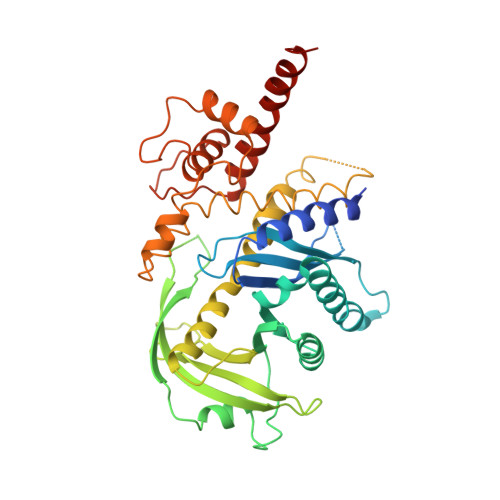The three-dimensional structure of a Tn5 transposase-related protein determined to 2.9A resolution.
Davies, D.R., Braam, L.M., Reznikoff, W.S., Rayment, I.(1999) J Biological Chem 274: 11904-11913
- PubMed: 10207011
- DOI: https://doi.org/10.1074/jbc.274.17.11904
- Primary Citation of Related Structures:
1B7E - PubMed Abstract:
Transposon Tn5 employs a unique means of self-regulation by expressing a truncated version of the transposase enzyme that acts as an inhibitor. The inhibitor protein differs from the full-length transposase only by the absence of the first 55 N-terminal amino acid residues. It contains the catalytic active site of transposase and a C-terminal domain involved in protein-protein interactions. The three-dimensional structure of Tn5 inhibitor determined to 2.9-A resolution is reported here. A portion of the protein fold of the catalytic core domain is similar to the folds of human immunodeficiency virus-1 integrase, avian sarcoma virus integrase, and bacteriophage Mu transposase. The Tn5 inhibitor contains an insertion that extends the beta-sheet of the catalytic core from 5 to 9 strands. All three of the conserved residues that make up the "DDE" motif of the active site are visible in the structure. An arginine residue that is strictly conserved among the IS4 family of bacterial transposases is present at the center of the active site, suggesting a catalytic motif of "DDRE." A novel C-terminal domain forms a dimer interface across a crystallographic 2-fold axis. Although this dimer represents the structure of the inhibited complex, it provides insight into the structure of the synaptic complex.
- Institute for Enzyme Research and Department of Biochemistry, University of Wisconsin, Madison, Wisconsin 53705, USA.
Organizational Affiliation:

















